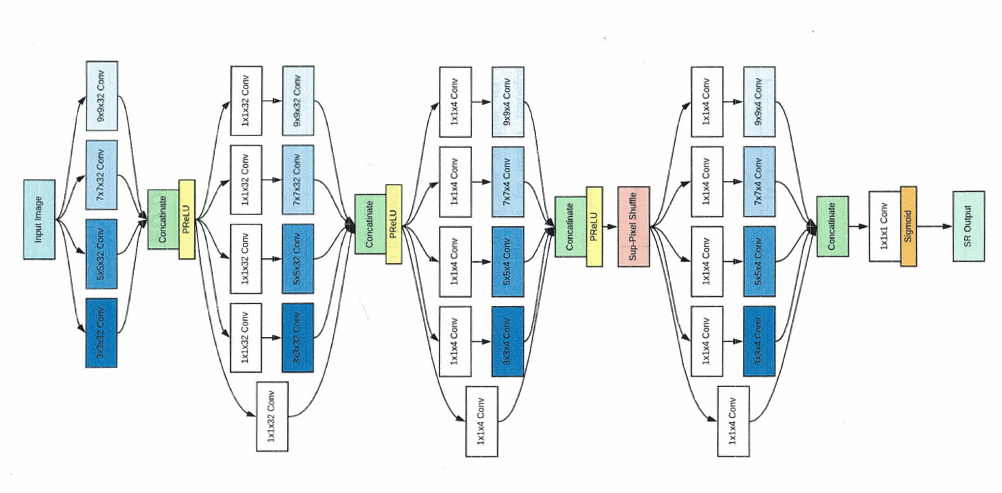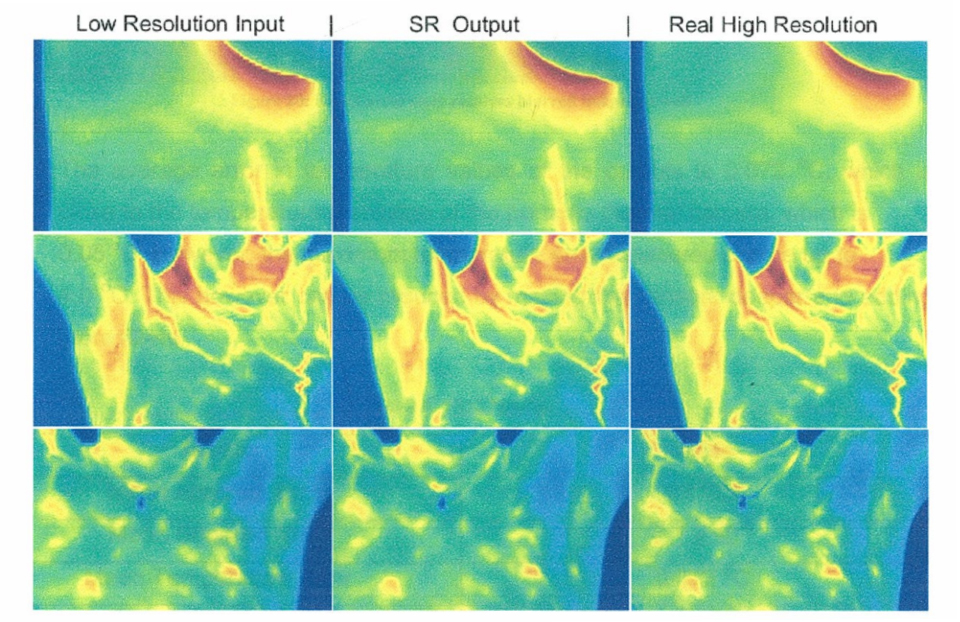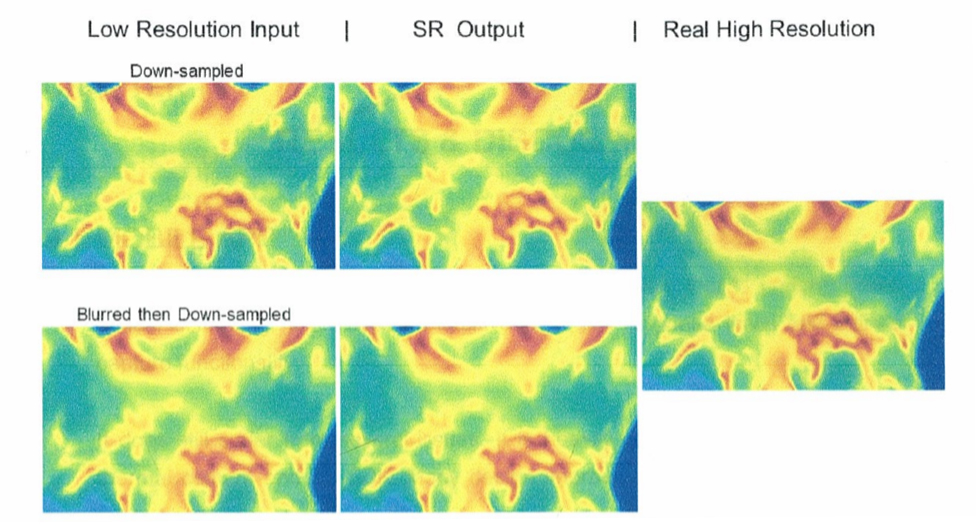Deep Learning Super Resolution for Thermal Images
In January 2018, as part of my final year dissertation at PES University, I interned at Niramai, a health tech startup that developed a novel non-invasive breast cancer screening solution using thermal imaging and machine learning.
As part of my internship, I was tasked with prototyping a method to enhance the resolution of images captured via a mobile compatible miniature thermal camera. My approach to this problem was to use a supervised deep-learning neural network, as we had a large dataset of images to work with. Over the course of the next 5 months, I poured over machine learning and super resolution research papers and began testing various models.
The objective was to build a model that could perform a 4x upscaling on the input thermal images (single channel grey-scale). The original dataset contained a collection of over 3,500 images of patients screened for cancer. These were taken with an industrial grade thermal camera at a resolution of 320x240. For each patient, images were taken at 5 different angles. For the actual training, over 28,000 images were created with transforming the source images with combinations of flipping, rotating, and blurring then down-sampling to 160x120 images. This was split into about 26,000 for training and 2,000 for testing.
The final neural network had 36 layers with a total of over 6,100,000 trainable parameters. It’s architecture was inspired by Google’s Inception Network and used ‘Inception Modules’ and ‘Sub-Pixel Convolution’ to achieve high accuracy upscaling.

From the images below, we can see that the model performs an accurate upscaling operation on the input images for both direct down-sampled as well as blurred down-sampled inputs. The average error in the output was ±0.072 ºC which is close to the thermal resolution of the camera at ±0.05 ºC. However the maximum temperature error was up to ±4.0 ºC.

